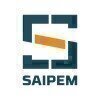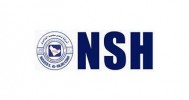Filter interviews by
Keller Ground Engineering HSE Officer Interview Questions and Answers for Experienced
Keller Ground Engineering HSE Officer Interview Experiences for Experienced
1 interview found
(1 Question)
- Q1. What is hira, Piling Hazards & control measures
- Ans.
HIRA stands for Hazard Identification and Risk Assessment. Piling hazards include collapse, falling objects, noise, and vibration. Control measures include proper training, PPE, and regular inspections.
HIRA stands for Hazard Identification and Risk Assessment
Piling hazards include collapse, falling objects, noise, and vibration
Control measures include proper training for workers
Control measures include providing approp...
Interview Preparation Tips
Top trending discussions






Interview questions from similar companies

I applied via Approached by Company and was interviewed before Aug 2021. There were 2 interview rounds.

(1 Question)
- Q1. Relocation and Salary Discussion
Interview Preparation Tips

(6 Questions)
- Q1. What about yourJob ?
- Q2. My job is everything provide safety
- Q3. What's your self ?
- Q4. This is my all job relationship details
- Q5. Which hieght need work at height?
- Ans.
Work at height is typically considered to be any task performed above ground level, such as on ladders, scaffolding, or roofs.
Work at height typically refers to tasks performed above ground level
Common examples include working on ladders, scaffolding, or roofs
Height requirements may vary depending on the specific job or industry
- Q6. Ground level to 1.8 mtr
- Ans.
The question is likely referring to the height range for safety measures or regulations.
This height range is commonly used in safety regulations for fall protection.
Safety measures such as guardrails or safety harnesses may be required for working at this height.
Training on proper use of safety equipment is essential for workers at this height.
Interview Preparation Tips


(2 Questions)
- Q1. Safety related question work at height. Lifting Plan
- Q2. Log out Tag out related question
Interview Preparation Tips

Manager Interview Questions & Answers
Egis India Consulting Engineersposted on 3 May 2023
I applied via Approached by Company and was interviewed in Apr 2023. There was 1 interview round.
(2 Questions)
- Q1. Related to quality requirements
- Q2. Ask about quality requirements

I applied via Company Website and was interviewed in Apr 2024. There were 2 interview rounds.
Mathematical round -1.5hours
(1 Question)
- Q1. Normal basic questions about supervising
Interview Preparation Tips
HSE Officer Interview Questions & Answers
Zahra Korea General Maintenanceposted on 2 Aug 2022
I applied via Walk-in and was interviewed before Aug 2021. There was 1 interview round.
(1 Question)
- Q1. Related in your experience, family background. monthly salary, working days. labor law.
Interview Preparation Tips
- about your releavant work
I applied via Referral and was interviewed before Sep 2021. There were 2 interview rounds.

(2 Questions)
- Q1. What are the classes of fire?
- Ans.
There are 4 classes of fire: A, B, C, and D.
Class A fires involve ordinary combustibles like wood, paper, or cloth.
Class B fires involve flammable liquids or gases like gasoline or propane.
Class C fires involve electrical equipment like appliances or wiring.
Class D fires involve flammable metals like magnesium or titanium.
Each class requires a different type of extinguisher.
There is also a Class K for fires involving c...
- Q2. What are the types of fire extinguishers?
- Ans.
There are five main types of fire extinguishers: water, foam, carbon dioxide, dry powder, and wet chemical.
Water fire extinguishers are suitable for Class A fires involving solid materials like wood or paper.
Foam fire extinguishers are effective on Class A and B fires, which involve flammable liquids like gasoline or oil.
Carbon dioxide fire extinguishers are used for Class B and C fires, which involve flammable gases o...
Interview Preparation Tips

I applied via Recruitment Consultant and was interviewed in Nov 2018. There was 0 interview round.
Interview Preparation Tips
Skills: Communication, Body Language, Problem Solving, Analytical Skills, Leadership, Presentation Skills, Time Management, Decision Making Skills
Duration: <1 week

I applied via Walk-in and was interviewed before Jan 2021. There was 1 interview round.
Interview Questionnaire
3 Questions
- Q1. Why are you choose this propesson
- Q2. What is environment
- Ans.
Environment refers to the natural and physical surroundings in which an organism or community exists.
Includes living and non-living components
Can be affected by human activities
Examples: air, water, soil, plants, animals
Can be local or global in scale
- Q3. Incase your company is not accept hse conditions how to convene
Interview Preparation Tips
Keller Ground Engineering Interview FAQs
Tell us how to improve this page.
Keller Ground Engineering Interviews By Designations
- Keller Ground Engineering Planning Engineer Interview Questions
- Keller Ground Engineering Senior Executive SCM Interview Questions
- Keller Ground Engineering Assistant Manager Interview Questions
- Keller Ground Engineering Quality Engineer Interview Questions
- Keller Ground Engineering Civil Engineer Interview Questions
- Keller Ground Engineering Quality Assurance/Quality Control Manager Interview Questions
- Keller Ground Engineering Recruitment Manager Interview Questions
- Keller Ground Engineering QA QC Engineer Interview Questions
- Show more
Interview Questions for Popular Designations
Keller Ground Engineering HSE Officer Interview Process for Experienced
based on 1 interview
Interview experience
Interview Questions from Similar Companies
Keller Ground Engineering HSE Officer Reviews and Ratings
based on 10 reviews
Rating in categories
|
HSE Officer
21
salaries
| ₹2.4 L/yr - ₹6.3 L/yr |
|
QA QC Engineer
18
salaries
| ₹2.8 L/yr - ₹7 L/yr |
|
Project Engineer
17
salaries
| ₹3.8 L/yr - ₹6.5 L/yr |
|
Safety Officer
17
salaries
| ₹3.2 L/yr - ₹5 L/yr |
|
Senior Engineer
14
salaries
| ₹4.9 L/yr - ₹11 L/yr |

AECOM

Saipem

Nasser S. Al Hajri Corporation

Egis India Consulting Engineers
- Home >
- Interviews >
- Keller Ground Engineering Interview Questions >
- Keller Ground Engineering HSE Officer Interview Questions for Experienced












